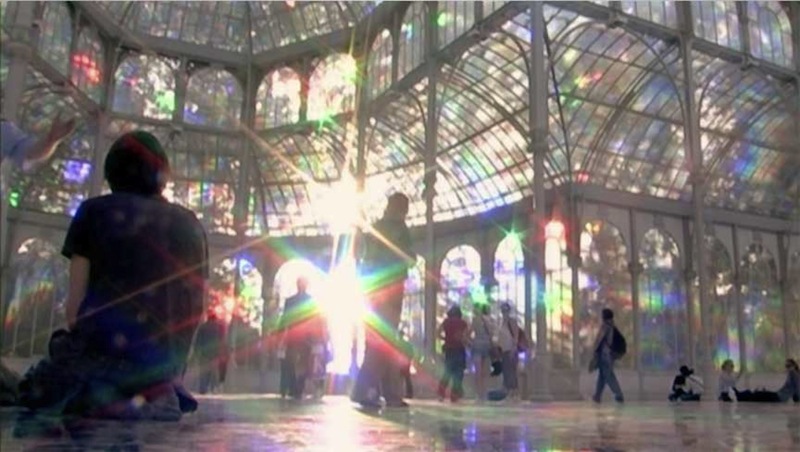
Kimsooja, To Breathe—A Mirror Woman, 2006. Installation at The Crystal Palace, Madrid. Production still from the Art in the Twenty-First Century Season 5 episode, “Systems,” 2009. © Art21, Inc. 2009.
Art21’s new film, Artist to Artist: Diana Al-Hadid at the 55th Venice Biennale, features Diana Al-Hadid in conversation with her peers, including fellow Art21 artist Kimsooja. In conjunction with this film, Art21 has released a previously unpublished interview with Kimsooja, conducted in 2008, in which she discusses her path to becoming an artist, her earliest influences, and her “breathing room” installations. Here’s an excerpt:
ART21: What is your earliest memory of making something creative?
KIMSOOJA: In Korea, we lived in a house with a straw roof and it was a really, really cold. Even though we had a stove in the room, when I woke up in the morning there was frost all over the walls. I would scratch the frost, making lines and drawings. Maybe that was my first drawing piece. When I would go outside I’d make little sculptures out of the snow or mix it with sugar to make ice cream.
ART21: And the idea of becoming an artist, when did that really strike you?
KIMSOOJA: I think I first had consciousness as an artist when I was in middle school. When my art teacher asked me to go to art competitions, I refused it, because I thought art shouldn’t be you know judged that way or given any prize. So I refused to go participate in any competitions. So I think I was already aware of being an artist or of my identity as an artist.
ART21: How old were you?
KIMSOOJA: Thirteen or fourteen years old I think. But I always had a dream of being an artist when I was a little girl. Of course, it was just a dream, nothing really particular. When I was at public school in fifth grade, my teacher asked us to put down two different occupations we wanted to be. I don’t know why he asked that two different ones, but I put one as a painter and the other as a “speaker,” without knowing I meant philosopher—a speaker not to the public, but who gives wisdom to the people. In 1994 when I was preparing my show in Korea, I realized I had been doing both art and philosophy.
ART21: Tell me about the philosophy part. Explain how the art and philosophy where manifesting together.
KIMSOOJA: All the questions I had as an artist personally and professionally were always linked to life itself. And I saw art in life and life as art. I couldn’t separate one from another. So my gaze to the world and my questions were always related to life itself.
ART21: What sorts of questions were you posing for yourself? Were there issues or questions that troubled you or provoked you?
KIMSOOJA: It’s very personal. I actually started sewing pieces, using a needle as a tool, when I prepared bed covers with my mother in 1993. And that was the moment when I was also searching for the structure of the world—the inner structure of the world—and also searching as a painter for the structure of the surface. I was mostly interested in vertical and horizontal structures at the time, so I’ve been trying to see every single hidden structure in that perspective and then trying to find the right methodology to express that. When I was putting a needle into the silky fabric, I had a kind of exhilarating feeling, like my head was hit by a thunderbolt. And I felt the whole energy of the universe pass through my body and to this needle point through the fabric. I just was so struck by that fact and I thought, “This is it. This is the structure I was looking for.” And it was interesting, too, because the fabric itself had a vertical and horizontal structure in it. And the sewing had another circulative, performative element, but at the same time, always the connection between art and life. And that’s how my work started, from just daily life activities.
Continue reading “Kimsooja: It Was Just a Dream” at Art21.org.




Pingback: Dec 19 -- Flipboard Explorations | Created MediaCreated Media
Pingback: Arte e curiosità dal mondo – L’installazione di arcobaleni di Kimsooja | Barbara Picci